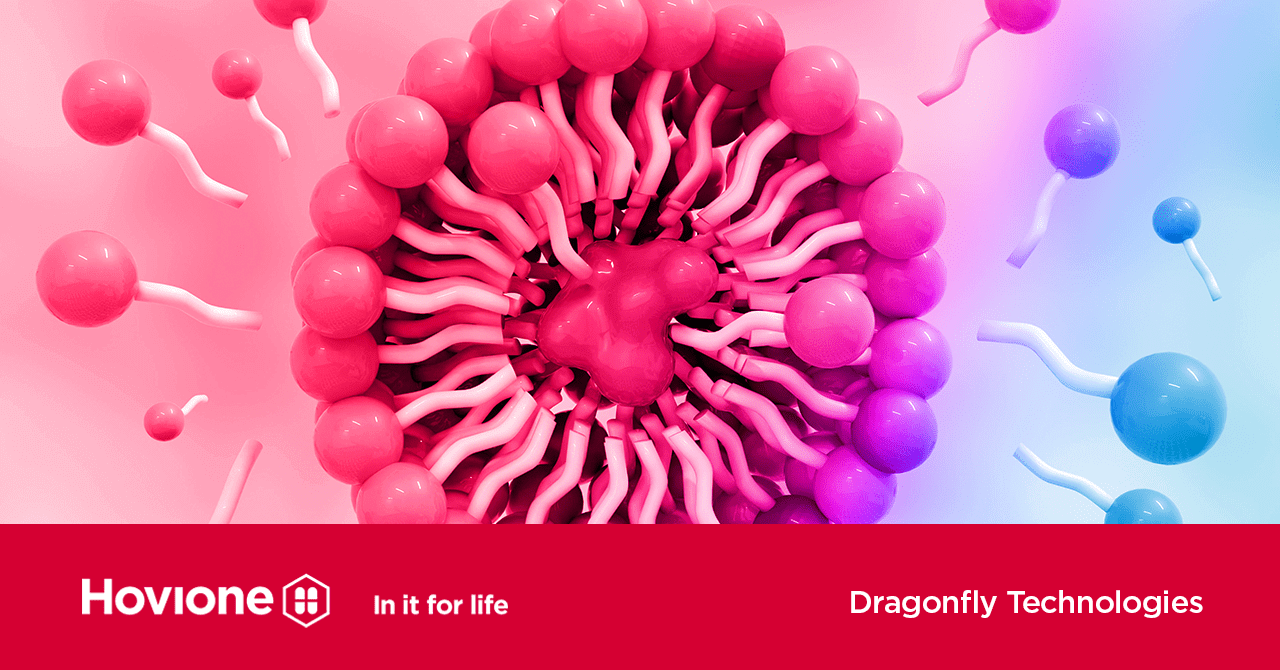Press Room
Hovione partners with Dragonfly Technologies to offer micellar chemistry technology to customers as a sustainable alternative to conventional chemical processes
The agreement provides Hovione with the capability to develop chemistry-in-water, enabling a significant reduction in carbon footprint compared to conventional chemical processes relying on traditional organic solvents.

- Hovione has entered into a license agreement with Dragonfly Technologies, Inc. to offer its customers the breakthrough micellar technology developed by Prof. Lipshutz.
- The agreement provides Hovione with the capability to develop chemistry-in-water, enabling a significant reduction in carbon footprint compared to conventional chemical processes relying on traditional organic solvents.
Lisbon, March 07, 2024, Hovione, the specialist integrated CDMO and leader in spray drying and particle engineering, today announced it has signed an agreement with Dragonfly Technologies, Inc. to gain access to its micellar technology for chemistry-in-water processes, developed by Prof. Bruce Lipshutz of the University of California, Santa Barbara (UCSB). Hovione will further progress the technology to make it an integral part of its API manufacturing technology offering.
Micellar chemistry enables multiple chemical transformations to take place in nanomicelles dispersed in water, mimicking natural chemical transformations. The technology allows reactions to occur at lower temperatures and enables the reduction or even the avoidance of rare and expensive metal catalysts. At the same time, by minimizing the use of organic solvents, it can also reduce the carbon footprint of the desired chemical reactions.
Dr. Jean-Luc Herbeaux, Hovione’s CEO commented: "Manufacturing of APIs and their intermediates make up a significant proportion of the overall carbon footprint of pharmaceutical product manufacturing. Gaining access to Dragonfly’s groundbreaking micellar technology is a key step in our journey to introduce more sustainable manufacturing options at industrial scale. This proprietary process technology enables the use of less energy-intensive conditions, lower levels of precious metal-containing catalysts, and lesser use of organic solvents.”
Prof. Bruce Lipshutz said: “I am delighted about the collaboration between Hovione and Dragonfly on micellar catalysis chemistry in water. Hovione has a long history of developing and industrializing innovative technologies for the pharma industry. This agreement will help ensure that aqueous micellar technologies will have wider and faster market adoption, benefiting the industry as a whole, by enabling development of nature-based sustainable processes in water.”
This collaboration is another example of Hovione´s commitment to expanding its technology platforms and contributing towards creating a more sustainable industry. The company is investing both in new assets and innovative technologies to meet customer demand for more sustainable integrated and differentiated development and manufacturing services for drug substances, particle engineering, and drug products.
This new agreement follows on from other partnerships recently forged by Hovione to deliver new innovative solutions to customers, including those with IDC, to offer innovative nasal delivery devices, with H&T Presspart for the advancement of a dry powder inhaler platform, with Zerion Pharma to commercialize the Dispersome® technology platform and with Ripple Therapeutics to expand the use of the Epidel® platform beyond ophthalmic applications. In addition, in November 2024 Hovione acquired ExtremoChem, a company with a portfolio of rare sugars which have shown potential in stabilizing biopharmaceuticals.
Note to editor:
Dragonfly Technologies, Inc. is a company founded by Prof. Bruce Lipshutz which is devoted to micellar technology.
About Hovione:
Hovione is an international company with over 60 years of experience in pharmaceutical development and manufacturing operations. As a Contract Development and Manufacturing Organization (CDMO) it has a fully integrated offering of services for drug substances, drug product intermediates and drug products. The company has four FDA inspected sites in the USA, Portugal, Ireland and China and development laboratories in Lisbon, Portugal and New Jersey, USA. Hovione provides pharmaceutical customers services for the development and compliant manufacture of innovative drugs, including highly potent compounds, and customized product solutions across the entire drug life cycle. In the inhalation area, Hovione offers a complete range of services, from API, formulation development and manufacturing, capsule filling and devices.
Hovione's culture is based on innovation, quality and dependability. Hovione is a member of Rx-360, EFCG and participates actively in industry quality improvement initiatives to lead new global industry standards.

